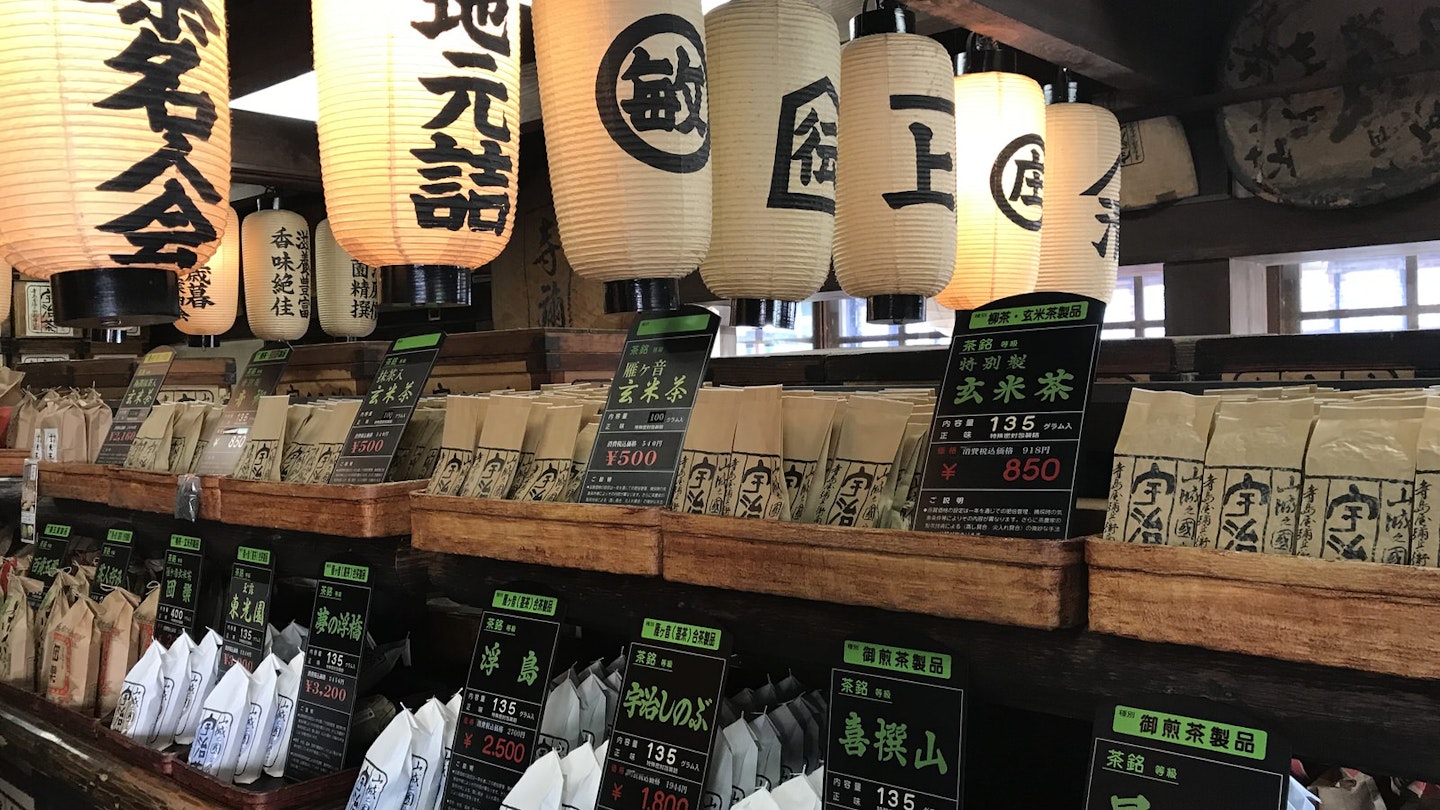The tea master at Takumi no Yakata teahouse in Uji, just south of Kyoto, carefully pours hot water into two tiny teacups. She then deftly empties both into the tea tray, one in each hand. Warming teaware before use is key, she tells me. Uji is one of Japan’s main producers of high-quality green tea, and its riversides and narrow streets are lined with charming teahouses and quaint tea shops. The city is also home to the stunningly beautiful Byōdō-in temple, whose Phoenix Hall graces the back of the country’s ¥10 coin.
Uji’s Green Tea Culture
Uji’s history with tea stretches back around 800 years and is arguably the reason the city exists. With an ideal climate and soil for tea growing, plus proximity to the economic hub of Kyoto, Uji has emerged as a center of superior green tea production in Japan. This reputation is spreading overseas, making Uji a hotspot for matcha lovers and green tea aficionados. Despite growing popularity, Uji remains committed to its traditional roots in tea culture.
There are three main types of tea grown in Uji:
- Sencha: A green tea ideal for everyday drinking.
- Gyokuro: The highest grade of Japanese green tea.
- Tencha: Tea leaves ground to make the popular matcha powdered tea.
Gyokuro and tencha are special because the leaves are shaded from sunlight a fortnight or two before harvesting. This process reduces tannin and enhances sweetness, offering less bitterness with a characteristic umami flavor. The leaves are of such high quality that, seasoned with a touch of soy sauce, they can be consumed after brewing.
How to Drink Green Tea in Uji
As well as warming the tea set, my instructor explains that water temperature and timing are critical. Each type of tea requires a different brewing temperature and time – gyokuro, for example, is best brewed at 60℃ for 120-150 seconds. When pouring the tea from the pot into cups, it is essential to alternate between them to ensure an even flavor. Different types of teapots are available for various tea types, providing the best taste from the leaves. Every step in the drink’s preparation is precise and unhurried, exemplifying Japanese hospitality.
If this sounds a bit intimidating, Uji’s numerous tea masters are eager to explain the tea-growing process and guide you in brewing the perfect pot, before allowing you to try it yourself. You don’t have to go far to find a teahouse, like Takumi no Yakata, where you can enjoy a tasting session. For a more in-depth cultural experience, authentic Japanese tea ceremonies are also available in many Uji teahouses, though prior arrangement may be needed. These ceremonies introduce tea etiquette and include traditional Japanese sweets.
After enjoying Uji’s delightful tea, visit the Omotesando shopping street to purchase some to take home. This area features several cafes boasting tea-infused menus, including green tea soba noodles, green tea dango (sweet dumplings), and green tea-flavored ice cream.
The Best Things to Do in Uji
While tea is the highlight of Uji, it offers much more. The top attraction is Byōdō-in, one of the most recognizable temples in Japan, open for public guided tours. Set elegantly in a tranquil pond, its shape symbolizes a phoenix spreading its wings, making it easy to understand its place on the ¥10 coin. The temple also hosts a remarkable subterranean museum filled with Buddhist artwork and relics.
Additionally, Uji holds prominence in Japanese literature as the setting for pivotal chapters of The Tale of Genji. This classic 11th-century novel, written by noblewoman Murasaki Shikibu, can be explored in depth at a dedicated museum in Uji. Uji Bridge, a notable location featured in the novel, alongside the serene riverbanks, is perfect for a leisurely stroll regardless of literary familiarity.
Getting to Uji
From Kyoto station, take the JR Nara line to Uji station, which takes about 20-25 minutes. Travelers from Nara’s JR station can also reach Uji via the Nara line within 30-45 minutes. Most of Uji’s attractions are conveniently within walking distance from the station.




